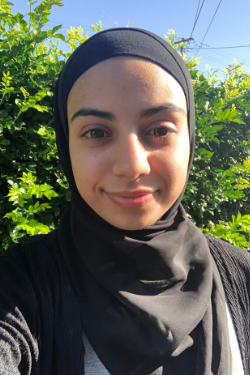A day in the life of a nursing student on placement
Bachelor of Nursing students complete 800+ hours of clinical placement - read about Fatima's typical day!

By Fatima Ankoush, UTS Bachelor of Nursing student

As a UTS nursing student, I'll complete 840 hours of clinical placement during my degree across a variety of different clinical subjects.
This is an account of my typical day while on one of my clinical placements at an older persons’ mental health ward:
6am
Time to get up and be ready for a busy but enjoyable day! I'll start the day with some breakfast to ensure that I have high amounts of energy to get me through the day.
6.45am
I will arrive at the hospital, get my temperature checked, and head to the Mental Health ward to meet my facilitator and other students.
7am
I receive handover - where I find out about the patients' medical history, their behaviour the previous night, whether they have slept well, what their ongoing plan is, and ultimately have a better understanding of the patients.
7.30am
This is the busiest part of the day! I'll usually assist with personal hygiene, start taking the patients vital signs (such as blood pressure and temperature) and get everyone ready in the dining room for breakfast.
If there is a patient with diabetes, I would also check their blood sugar level so that they can receive the right amount of Insulin and ensure the correct management of their diabetes. Other medications are also given during this time, such as olanzapine, which is an antipsychotic medication, usually used to treat schizophrenia or bipolar disorder.
8.30am
I would usually complete patients charts, such as their bowel charts, food charts and sleeping charts.
Something unique to the mental health ward is the visual observation charts. This is where we observe the patient (2 hourly, hourly or 30 minutely, depending on the patient's condition) and record what they have been doing throughout the shift.
9am
This is where it starts to get a little less busy. Some patients will watch TV, others may be colouring, while some may be chatting with each other. I will usually go for a walk outside in the garden with a patient and have a nice chat.
Mental health ward settings are different to general wards, as there is a dining room, kitchen and garden, reflecting a warm and positive environment.
10am
Time for a quick 20 minute break. I will usually catch up with other students and we will all share our experiences and interesting things we have encountered on the day.
10.20am
I head back to the ward! I would usually sit and colour with a patient who has dementia, and try to build a trusting relationship with him. I would then choose two patients and start to focus on them - researching their conditions, their medications, and trying to build my clinical reasoning skills.
12.00pm
The patients get ready and excited for morning tea. I'd help set up and make sure everyone is seated comfortably.
12.30pm
Progress notes time! I would write about the two patients I have focused on for the day. I would usually incorporate a mental status examination (MSE) within my notes. This is a popular examination method, where it is a structured way of observing and describing the patients current state of mind.
1.00pm
My facilitator would come and check up on us. I would present to her my observations, research, and notes for the day. We would then delve into a deep discussion of the patients, and start to tie two things together, and really understand what we do and why we do it.
1.30pm
I would go on my 30 minute break and just take some time to rest, reflect and eat something.
2.00pm
Some medications would be given during this time. I'd then help patients set up for lunch.
2.30pm
This is a good time to update any charts, such as food charts and bowel charts. I would further spend time with patients - whether it be colouring, taking a walk, playing board games, or just chatting. I make sure that I am able to communicate well with the patients and form a therapeutic relationship with everyone. Our facilitator may also come check up on us again and see how everyone is going.
3.00pm
Handover time! This is where the new PM staff come in and it is the perfect opportunity to give the staff an overview of the patients, and what their ongoing plan is.
3.30pm
It's finally time to head home and rest, so I can come prepared the next day for another interesting shift!
